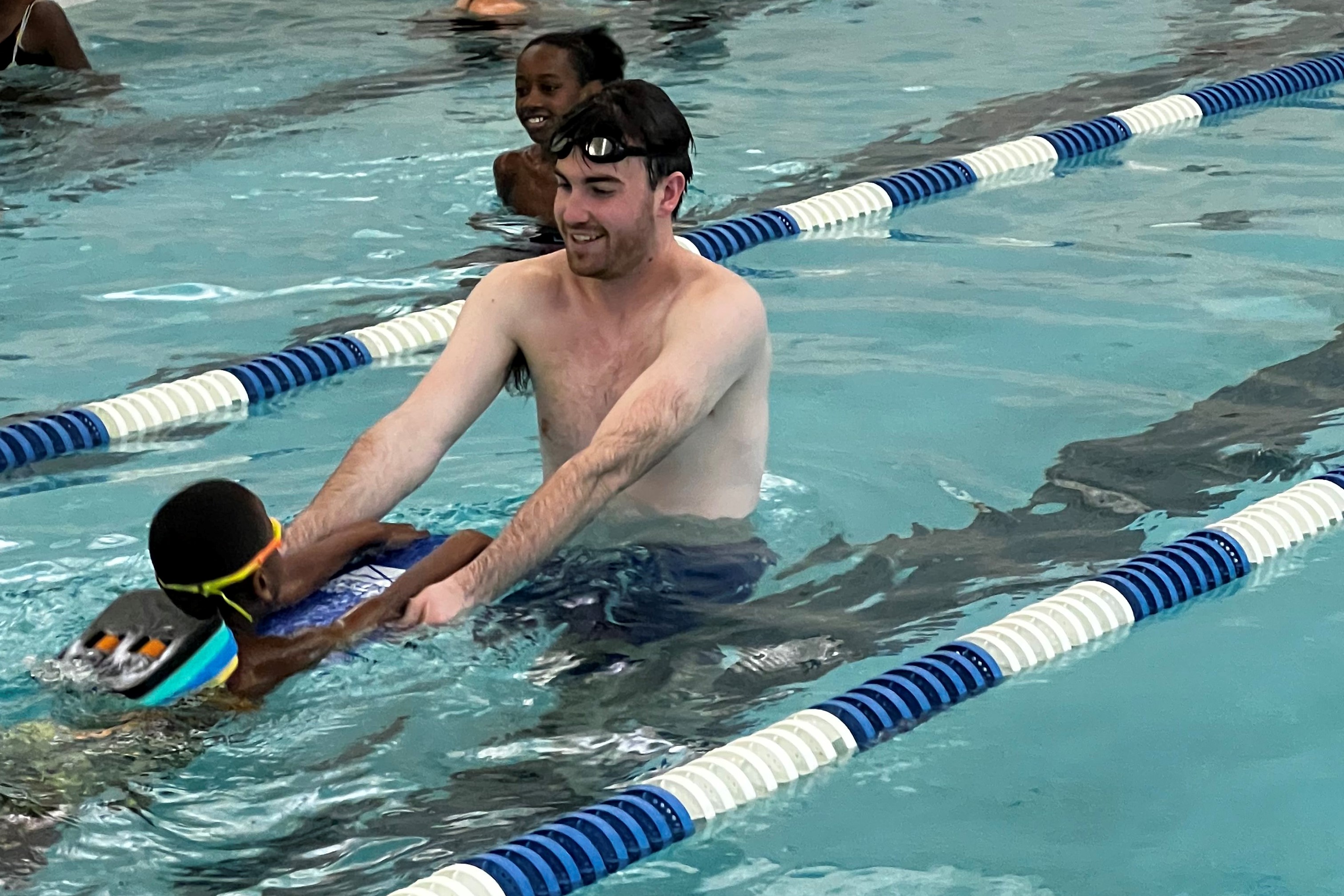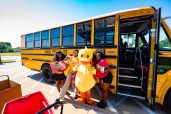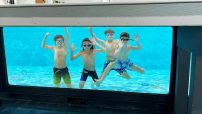Leah Boyd is always lo oking for new activities for her special-education students.
So when she came across information about a local Special Olympics swimming event to be held locally, she wanted to offer that new experience to her students at Calvin Donaldson Environmental Science Academy – Exceptional Education Program.
She explained this when she approached Peggy Grall, aquatic program manager for the City of Chattanooga (Tenn.).
“It was just so important for her to open up all the possibilities for her students,” Grall says.
But it quickly became apparent that many of these youngsters, most of whom had intellectual disabilities, hadn’t been in a pool before. To qualify for the local Special Olympics event, athletes must be able to swim one pool length independently or with a flotation device. Only a couple could do this.
But the aquatics team saw an opportunity to not only train some students for the upcoming competition but — at least as important — to make the remaining kids safer in water. “I want every kid to swim,” Grall says. “When I see a kid who shows up at the pool, my first thought is ‘I gotta get that kid in the pool.’”
Model teamwork
By joining forces, Grall and Boyd would provide this opportunity.
Next, Grall enlisted the city’s therapeutic recreation manager, Elaine Gossett. Where the aquatics staff would provide swimming instruction and expertise, the therapeutic recreation team focused on the non-swimmers, teaching the basics in a way that met their needs. The teachers from Calvin Donaldson were on-hand to manage the life-skills and behavioral components, such as how to change and take care of clothing, and entering and exiting the pool in an orderly fashion.
“We had the school staff, therapeutic staff and aquatics all in the pool like one big, happy family,” Grall says.
They moved the students to a pool more suitable for beginning instruction, one with a zero-depth, 25-yard ramp and 3-to-51/2-foot-deep water.
The 15 students were split into two groups – swimmers and non-swimmers. The first would receive swimming instruction to help prepare and qualify them for the Special Olympics. They’d learn how to go underwater, float, work with a flotation device, and build their endurance so they could reach the end of the pool without grabbing the sides or a lane rope. Some had to overcome their fear of putting their heads underwater.
The other group was be introduced to the water and learn how to be safe. They went through free play, learned to go underwater, pick up sticks underwater, and jump into the shallow end.
Students attended twice a month during school hours for six months.
Multi-layered victories
As far as the Special Olympics went, the staff aimed to send two students.
A few already had water experience, and one was an experienced swimmer already, so that seemed an attainable goal. By the program’s end, six students competed in the Special Olympics. A seventh could have, but he was too young. Three swimmers medaled in every event they entered, with one earning two golds.
“At the Special Olympics meet, there’s a viewing deck for the families,” Gossett recalls. “Some of the loudest cheers were coming from the parents of the kids we worked with.”
For many, it was the first time they had participated in a sport, as opposed to watching their siblings do it, parents told her.
But you could argue that the Special Olympics success came second in the list of outcomes. Whether or not a child could participate, they had experienced and accomplished something new. Some even underwent behavioral changes, such as the boy who was normally disruptive but transformed into a calm, relaxed presence who made several friends. “The program had so many levels of goals and opportunities for the kids to grow,” Gossett says.
The instructors could see the difference. “The kids were always there on Thursdays,” Grall says. “They didn’t want to miss it. Students in the exceptional education program somewhat get bullied at school, but here they felt awesome, because they got to do something that the other kids in the school didn’t.”
Not surprisingly, the program has been continued, with an even larger class being taught for this school year.
Keep the conversation going—sign up for our newsletter for exclusive content and updates. Sign up for free.



